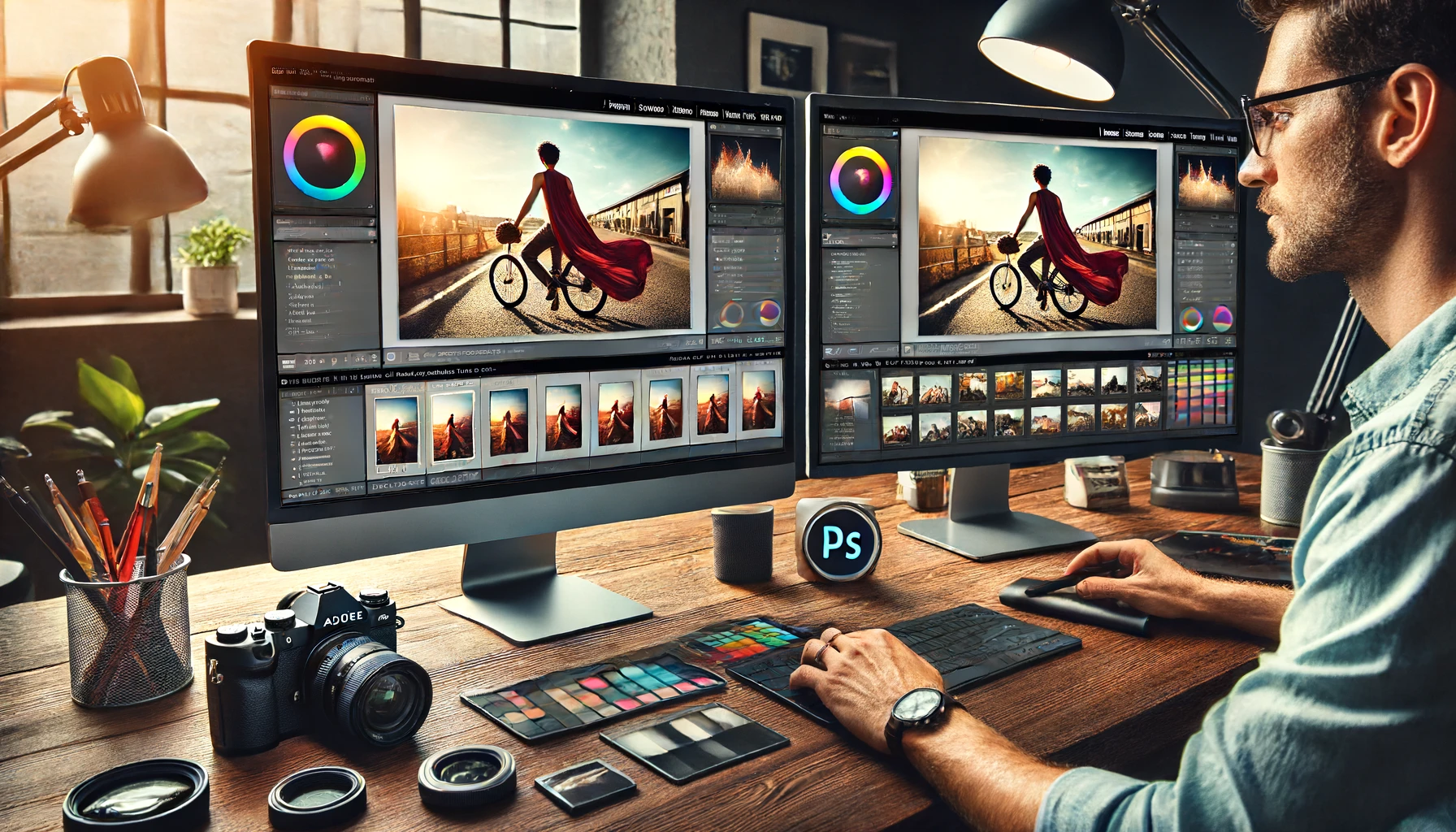In the digital age, post-processing has become an essential part of photography. With tools like Adobe Photoshop and Lightroom, photographers can elevate their images from great to breathtaking. This blog will delve into advanced post-processing techniques, helping you transform your photos while maintaining a natural and professional look.
Understanding the Basics: Lightroom vs. Photoshop
Lightroom:
- Non-destructive editing: Changes are saved as metadata, preserving the original image.
- Batch processing: Ideal for editing large volumes of photos.
- Organizational tools: Excellent for cataloging and managing your photo library.
Photoshop:
- Pixel-level control: Perfect for detailed retouching and complex compositions.
- Layers and masks: Allow for intricate adjustments and creative effects.
- Advanced tools: Such as Content-Aware Fill, Healing Brush, and advanced filters.
Step-by-Step Guide to Editing in Lightroom
- Importing and Organizing:
- Import your photos into Lightroom and use keywords, collections, and ratings to organize them.
- Create smart collections to automatically sort photos based on criteria like date, location, or camera settings.
- Basic Adjustments:
- Start in the Develop module with basic adjustments like exposure, contrast, highlights, shadows, whites, and blacks.
- Use the Tone Curve for fine-tuning brightness and contrast.
- Color Correction:
- Utilize the HSL/Color panel to adjust hue, saturation, and luminance of individual colors.
- Apply Split Toning to add color to the highlights and shadows for creative effects.
- Detail Enhancement:
- Sharpen your image using the Detail panel, focusing on edges while avoiding noise.
- Use the Noise Reduction sliders to smooth out any unwanted grain.
- Lens Corrections and Effects:
- Correct lens distortions in the Lens Corrections panel.
- Add a subtle vignette in the Effects panel to draw attention to the subject.
Advanced Techniques in Photoshop
- Frequency Separation for Skin Retouching: Modern Frequency Seperation: So Much Easier – Photoshop
- Separate the texture and color of the skin into different layers.
- Use the Healing Brush and Clone Stamp tools on the texture layer to smooth skin without affecting the color.
- Dodging and Burning:
- Create a 50% gray layer set to Overlay blending mode.
- Use the Dodge Tool to lighten areas and the Burn Tool to darken areas, enhancing the photo’s depth and dimension.
- Using Layers and Masks:
- Employ adjustment layers for non-destructive edits.
- Use layer masks to apply adjustments selectively, refining your edits with the Brush Tool.
- Content-Aware Fill and Patch Tool:
- Remove unwanted elements seamlessly with the Content-Aware Fill feature.
- Use the Patch Tool for more control over the area you want to replace.
- Composite and Creative Edits:
- Combine multiple images using layer masks and blending modes.
- Apply creative filters and effects, such as Gaussian Blur for depth of field or Liquify for artistic distortions.
Conclusion
Mastering post-processing in Adobe Lightroom and Photoshop can significantly enhance your photography. By understanding and applying these advanced techniques, you can bring out the best in your images while maintaining a natural and professional quality. Happy editing!
FAQs
- What is the difference between Lightroom and Photoshop?
- Lightroom is primarily for photo management and basic editing, while Photoshop offers advanced retouching and compositing tools.
- Can I use Lightroom and Photoshop together?
- Yes, many photographers use Lightroom for initial edits and organization, then switch to Photoshop for detailed retouching.
- How can I avoid over-editing my photos?
- Aim for subtle adjustments, frequently compare with the original image, and take breaks to review your work with fresh eyes.
- What are some essential keyboard shortcuts for Lightroom?
- Some useful shortcuts include ‘D’ for Develop module, ‘G’ for Grid view, and ‘R’ for Crop tool.
- How do I ensure my edits look consistent across multiple photos?
- Use Lightroom’s batch processing features, create and apply presets, and ensure your monitor is color-calibrated.
To make your editing workflow smoother and more efficient, I’ve created comprehensive PDF files of the most used shortcuts for Adobe Photoshop and Lightroom.
Feel free to download these PDFs and keep them at your fingertips while you work.
I appreciate your continued support and hope these resources are valuable to you. Happy editing!
Adobe Lightroom Shortcuts
Click the link below to download the PDF file:
Adobe Photoshop Shortcuts
Click the link below to download the PDF file:





